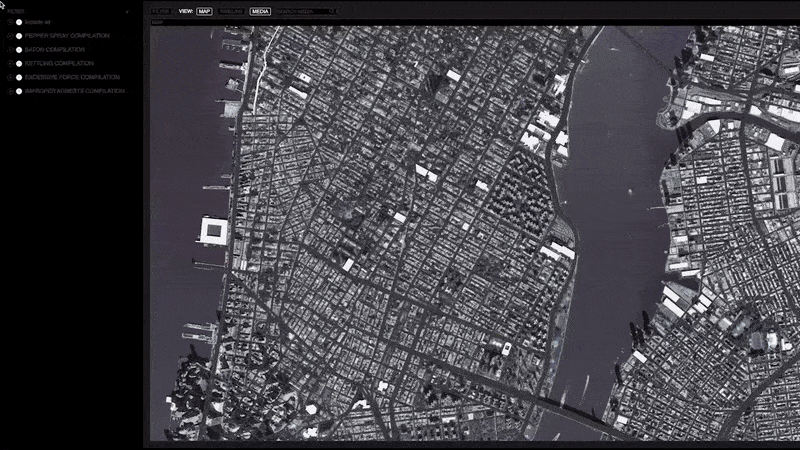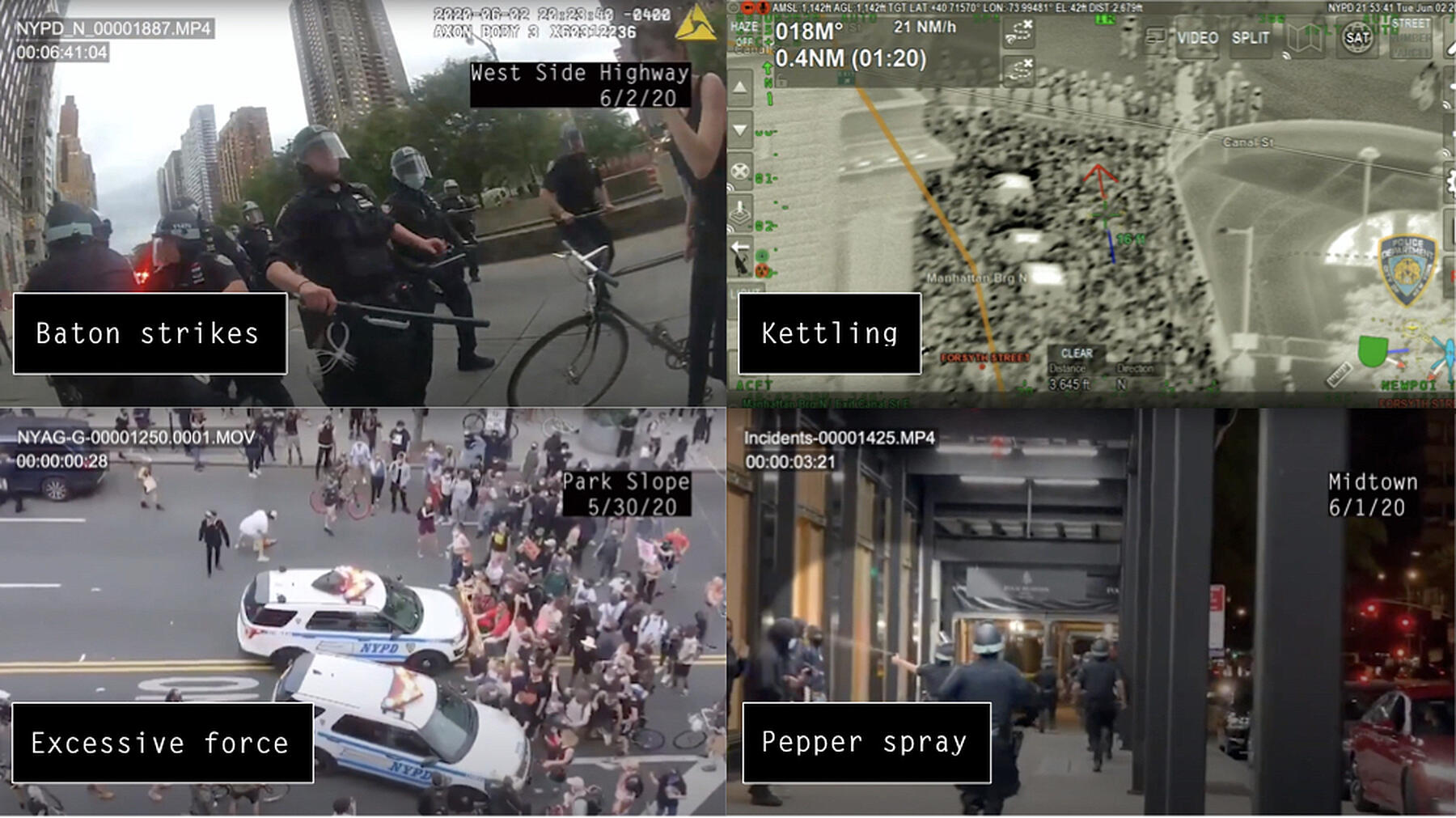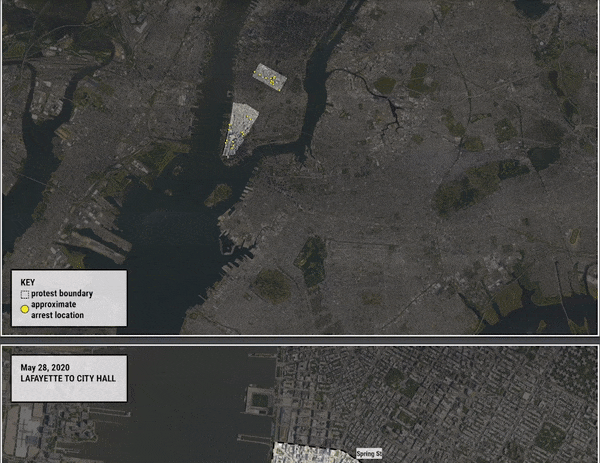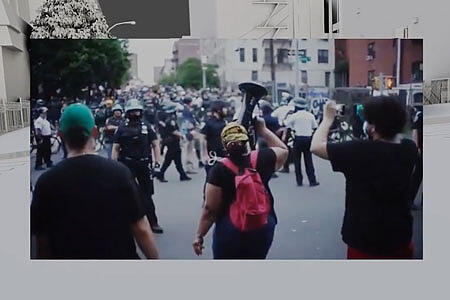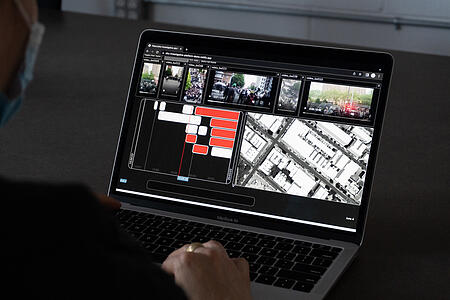Sow, et al. v. City of New York, et al.
Videos produced during discovery show that NYPD misconduct during the BLM movement of 2020 were widespread and pervasive.
Collaborators:
Wylie Law, Cohen&Green, Beldock Levine & Hoffman, Gideon Orion Oliver, Jon Nealon
Location:
New York City
Completion:
2023
During late May through early June of 2020, thousands of civil rights demonstrators gathered to protest police brutality following the death of George Floyd. Over the course of several months, the NYPD responded with widespread and varied use of force, resulting in hundreds of individuals being brutally injured, jailed, or otherwise harmed.
In response, a consortium of attorneys from Cohen&Green, Beldock, Levine & Hoffman, Wylie Law, Attorney Gideon Orion Oliver, and staff from the National Lawyers Guild (NLG), formed the BLM/Floyd Litigation Task Force to bring a class action lawsuit against the City of New York. The lawsuit, entitled Sow, et al. v. City of New York, et al., claims violations of the U.S. and New York state constitutions, including unlawful seizure, false arrest, and excessive use of force. Sow serves 1,380 plaintiffs who experienced NYPD misconduct across New York City’s five boroughs.
SITU Research was engaged by the legal team to support this casework and help establish the class action by surfacing key instances of police misconduct. Our team was tasked with analyzing police and protester movement in 83 locations. The primary evidence we received from the legal team, provided by the NYPD during the discovery period, included a large volume of police body cam and helicopter surveillance footage, as well as documentation captured by protesters on the streets. We received over 6,000 video assets in different formats and durations. The specific investigative priorities were established by the legal team and became key themes in our analysis—specifically, we were asked to identify constitutional violations that manifested as improper use of batons, improper arrests, improper use of pepper spray, excessive use of force, and kettling—an aggressive police tactic used to trap and arrest protesters.
Methodology
Our process began by setting up an instance of our video management tool Codec in order to situate the videos in time and space. Our first filter was to connect the videos to when and where they were approximately captured based on the geographic extents of each protest, such as Lafayette to City Hall, Foley Square to the Brooklyn Bridge, downtown Manhattan, and dozens of others. Then, we narrowed down the videos further by sorting and tagging each video based on what we saw in the footage: various forms of police violence and misconduct that corresponded to the class action’s criteria. We also noted the types of officers and units visible (e.g. Strategic Response Group, White Shirts), and the varied media categories (e.g. police worn body cameras, citizen documentation, NYPD aviation footage, and closed-door interviews with high-profile NYPD officials).
The process of reviewing this footage required sifting through hundreds of hours of footage, frame-by-frame in many cases. What we were left with after months of analysis was an archive of videos that showed patterns of widespread, systemic, and pervasive misconduct committed by the NYPD.
Following the identification of footage that fit the criteria, we created a series of video compilations based on the class action’s themes for use by the legal team in their settlement discussions with the city. Instead of going to trial, the City of New York chose to settle the case.
To support this final phase of the settlement, we produced eighteen maps for the legal team to help determine the process of which protesters would be eligible as class members. Using Codec to sort through the tagged videos, we were able to draw approximate boundaries of the geographic extents of each protest. Because of the fluid nature of these marches, one challenge was drawing clearly delineated extents. In some cases (e.g. McCarren Park on June 4), a protest would start in one area, splinter, and end in one or more areas. Our analysis of the protest extents were established from the available video documentation, arrest data sourced from the Mass Arrest Processing Center, and descriptions agreed upon between the prosecution’s legal team and the opposing counsel.
Accountability
According to the terms of the settlement, the City of New York will pay $9,500 to each of the 1,380 protesters arrested by the NYPD across certain Manhattan and Brooklyn protests between May 28 and June 4, 2020. An additional $9,500 will be provided for the ten named plaintiffs in the complaint, totaling over $13 million dollars, excluding attorney fees. This will be the largest amount paid to protesters in a class action in the history of the United States.
The video compilations, as well as the larger collection of videos archived in Codec, present clear and compelling evidence of the need for massive changes in policing in New York City. The NYPD’s protocols, structures, and methods for dealing with protests are rendered visible in this footage. While this lawsuit is part of a much wider network of ongoing litigation, Sow serves to spotlight the often violent misconduct the NYPD employed to suppress dissent during one of the most critical civil rights movements of our century. While historic in its proportions, the settlement represents a modest but essential step in combating the culture of impunity that too often defines policing in the United States.
Read the full press release here.
